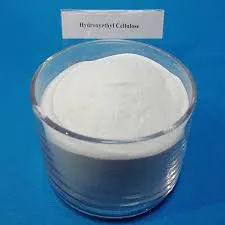
Nov . 06, 2024 00:43 Back to list
New Developments in Redispersible Polymer Powder Applications and Benefits
Understanding Redispersible Polymer Powders Applications and Benefits
Redispersible polymer powders (RDPs) have gained significant traction in various industries due to their versatility and functionality. These fine powders are essentially dry binders that, when mixed with water, reconstitute into a stable latex dispersion. This unique characteristic provides end-users with the benefits that come from both polymer emulsions and dry powder formulations.
Composition and Properties
RDPs typically consist of polymers derived from acrylate, styrene, or vinyl acetate. The manufacturing process involves the spray-drying of a polymer emulsion, resulting in a powder form that retains the essential properties of the original dispersion. Upon hydration, these powders exhibit properties such as adhesion, flexibility, water resistance, and tensile strength, which are vital for various applications.
Applications
1. Construction Industry RDPs are extensively used in construction materials, particularly in dry-mix mortars, adhesives, and coatings. They enhance the performance of these products by improving workability, adhesion to substrates, and water resistance. For instance, RDPs in tile adhesives improve flexibility and reduce the risk of cracking, even under dynamic conditions.
2. Paints and Coatings In the paint industry, redispersible polymer powders contribute to improved film formation and durability. They allow for the production of water-based paints with excellent adhesion and weather resistance. The incorporation of RDPs can also enhance finish quality and ease of application.
3. Textiles RDPs are used in the textile industry to improve the performance of coatings and finishes. They provide flexibility and durability to fabrics, making them suitable for various applications, including non-woven fabrics and functional textiles.
4. Adhesives and Sealants The adhesive industry benefits from RDPs, as they offer improved elasticity and cohesion in formulations. This leads to enhanced performance in various bonding applications, including both structural and non-structural uses.
5. Papers and Plastics In the domain of paper and plastics, RDPs are utilized to modify the surface properties and improve the printing capabilities of materials. They help achieve a balance of flexibility and strength, essential for modern applications.
Benefits
re dispersible polymer powder

The use of redispersible polymer powders presents numerous advantages
1. Convenience RDPs offer easy storage and handling compared to liquid emulsions, leading to lower transportation costs and reduced risk of spillage.
2. Customization Manufacturers can tailor RDP formulations to meet specific performance requirements of end products, allowing for enhanced efficacy in diverse applications.
3. Environmentally Friendly The water-based nature of RDPs aligns with growing environmental standards and regulations, promoting greener manufacturing processes.
4. Cost-Effectiveness RDPs can often reduce the overall cost of formulations by allowing for the reduction of other raw materials while maintaining or enhancing performance.
5. Improved Performance Properties The incorporation of RDPs results in enhanced characteristics such as improved adhesion, flexibility, and durability, thereby extending the lifespan and reliability of the finished product.
Challenges and Considerations
While redispersible polymer powders offer substantial benefits, there are challenges to consider. The sensitivity to moisture during storage and application can pose a risk if not properly managed. Additionally, the choice of the specific polymer and its properties must align with the desired application requirements to ensure optimal performance.
Conclusion
Redispersible polymer powders have become an indispensable component in numerous industries, enhancing the functionality and performance of various products. Their unique properties allow formulators to create superior materials that meet the growing demands for efficiency and sustainability. As industries evolve and embrace innovative solutions, RDPs are likely to remain at the forefront, driving advancements in material technology. Their continued development and application will undoubtedly shape the future of construction, coatings, textiles, and many other sectors, offering both performance and environmental benefits.
-
Versatile Hpmc Uses in Different Industries
NewsJun.19,2025
-
Redispersible Powder's Role in Enhancing Durability of Construction Products
NewsJun.19,2025
-
Hydroxyethyl Cellulose Applications Driving Green Industrial Processes
NewsJun.19,2025
-
Exploring Different Redispersible Polymer Powder
NewsJun.19,2025
-
Choosing the Right Mortar Bonding Agent
NewsJun.19,2025
-
Applications and Significance of China Hpmc in Modern Industries
NewsJun.19,2025







